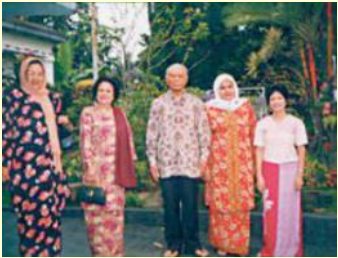The Malays of Sri Lanka – By Randika Jayakody & Jerome Perera
Source:Brisbane Sri Lankan Newsletter – Dæhæna – July 2022
Salamat! Artikel ini tentang orang Melayu Sri Lanka. This phrase translates as “Greetings, this article is about the Malay people of Sri Lanka”.
The Sri Lankan Malay community traces itself back hundreds of years to soldiers and exiled royals from the islands of Malay Archipelago. These communities hailed from Makassar, Sumatra, parts of Malaysia, and the island of Java among other places. Malay communities settled on the island of Sri Lanka over several centuries and played an active part in the country’s culinary, linguistic, anthropological, and martial history. Due to word count restrictions, I will The Malay community speaks the lyrical Bahasa Melayu. This beautiful language is currently experiencing a revival. refer to these diverse communities using the word “Malay”.
 A little recognized fact is that the Malays of Sri Lanka have a significant martial history and have been involved in most major military conflicts. One tragic story involved the three brothers Nuruddin and Saifuddin who fought for the British Malay regiment, whilst their sibling Sangunglo fought for the Kandyan King’s Malay regiment in 1803. Tragically, the brothers fought each other, with Sanglunglo dying in service of the Kandyan King, whilst his brothers being killed by the victorious King for refusing to join his ranks. I recommend readers explore the story as retold by Dr B. A. Hussainmiya as it is a reminder that communities such as the Malays challenge the linear narratives prescribed to the histories of minorities.
A little recognized fact is that the Malays of Sri Lanka have a significant martial history and have been involved in most major military conflicts. One tragic story involved the three brothers Nuruddin and Saifuddin who fought for the British Malay regiment, whilst their sibling Sangunglo fought for the Kandyan King’s Malay regiment in 1803. Tragically, the brothers fought each other, with Sanglunglo dying in service of the Kandyan King, whilst his brothers being killed by the victorious King for refusing to join his ranks. I recommend readers explore the story as retold by Dr B. A. Hussainmiya as it is a reminder that communities such as the Malays challenge the linear narratives prescribed to the histories of minorities.
The Malay community is also known for the elegant dagger that adorn their traditional costume. These undulating blades embody the richness of Malay military craftsmanship and are known as Keris or Kirichchiya.
The ubiquitous Sarong of Sri Lanka traces its history back to the Malay Archipelago. The word Sarong comes from the Indonesian word Sarung, referring to a tube of fabric covering a body. Sarongs are famous for being printed in Batik, which is another contribution of Malay communities. The delicate art of batik dying originates in the Island of Java and its popularity in Sri Lanka is indelible. Along with sarongs, the Malay community also introduced Kerabu and earring designs which continue to be popular today.
Then there are place names, with places like Ja-Kotuwa, Ja-Ela and Ja Watta, and Malay street being named after the significant Malay and Javan presence in these areas. Malay communities live throughout the island, with a notable population in Hambantota. The term Hambantota itself is of Malay origin and refers to the “sampan” a
type of Malay boat. Dodol, bibikkan, seekakku, nasi goreng and mee goreng are among the Malay culinary contributions.
Finally, one cannot ignore the rhythmic beats of the rabana. No Avurudu (Sinhala and Tamil New Year) celebration is complete without raban pada and it is important to acknowledge that the rabana is a drum introduced to Sri Lanka by the Malay community.
This article only summarises the barest contributions of the effervescent Malay community. The Youtube channels The Minority Taste by Ruzaina Hadgie and Lost and Forgotten by Dr Kareem Zameer details the culinary and historical contributions by the Malay community.

Randika Jayakody & Jerome Perera
Among Randika and Jerome’s many interests is
a deep passion to understand Sri Lankan history and culture.







